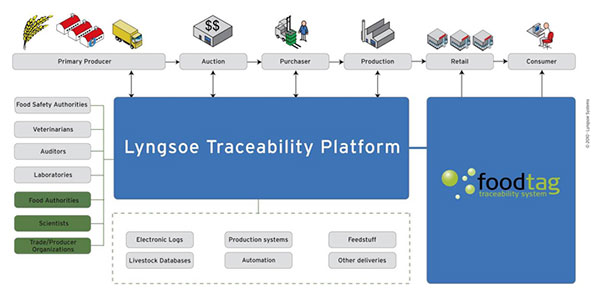Destroying Shellfish Toxins Before They Enter the Food Chain
Shellfish are a nutritious dietary staple, but they may have potentially harmful effects. In rare but serious cases, a potent neurotoxin produced by marine diatoms, called domoic acid (DA) or amnesic shellfish toxin (AST), has caused permanent memory loss and even death when ingested. But now, a group of AFMNet researchers from Dalhousie University are investigating bacteria that can destroy this marine biotoxin. Coincidentally, the bacteria can be found in the digestive tracts of shellfish themselves.
Prof. Tom Gill, Department of Process Engineering and Applied Science, and his research team have been working to isolate bacteria from shellfish that contain DA, such as blue mussels and soft-shelled clams. They’re screening these bacteria for the ability to degrade DA, and then feeding competent encapsulated strains to shellfish infected with DA to see if they can degrade the harmful toxin.
In Gill’s previous research on paralytic shellfish toxins (PSTs), another group of marine biotoxins, he found bacteria from blue mussels and soft-shelled clams that can break down these potent neurotoxins within one to three days. The idea to apply this work to DA came from research conducted in 1998 by Jim Stewart from Fisheries and Oceans Canada.
AST binds and accumulates in the tissues of shellfish. When ingested by humans, it binds to glutamate receptors – neural cells that normally bind glutamate and serve as prominent neurotransmitters. These transmitters induce neuron firing for cell and nerve function.
When AST binds to our glutamate receptors instead of glutamate, the neurons have an excitatory response, triggering an influx of calcium into the neural cell. These high doses of calcium can disturb cellular homeostasis, causing some neurons to die off and lose their firing function. If neurons are unable to fire, permanent memory loss and even death can occur.
Currently, there’s no known antidote for AST. But ongoing test results suggest the Dalhousie team is on to something. Gill is using High Performance Liquid Chromatography (HPLC) to track the degradation of DA by bacteria in test tubes and in shellfish tissues. His goal is to create a practical, commercial means of encapsulating the powerful bacteria to be fed to AST-contaminated shellfish, making them safe for human consumption.
“We’re looking for the magic silver bullet that will protect people from the toxin,” says Carrie Donovan, a research associate and former master’s student working with Gill. “We want to select competent strains of bacteria that will destroy the toxins within one to three days after being ingested by the infected shellfish.”
Other investigators and collaborators involved in this project from Dalhousie are network investigator Rafael Garduno, Donovan and Elizabeth Garduno from the highly qualified personnel team, and Aquatron manager John Batt. They are working with Susan Shaw, a director at the Canadian Food Inspection Agency; Doug Bertram, CEO of Innovative Fisheries Products Inc.; and Bruce Hancock, general manager of Country Harbour Sea Farms.
Funding for the project is being provided by AFMNet.
To have more articles like this emailed to your inbox, become a GFSR Member today!

-
 FeaturedRisk management
The Cost of a Breach: What a Cyberattack Could Mean for Food Safety Recalls
FeaturedRisk management
The Cost of a Breach: What a Cyberattack Could Mean for Food Safety Recalls
-
 FeaturedRisk management
Securing the Food Chain: How ISO/IEC 27001 Strengthens Cybersecurity
FeaturedRisk management
Securing the Food Chain: How ISO/IEC 27001 Strengthens Cybersecurity
-
 FeaturedRisk management
Revolutionizing Food Safety Training: Breaking Out of the “Check-the-Box” Mentality
FeaturedRisk management
Revolutionizing Food Safety Training: Breaking Out of the “Check-the-Box” Mentality
-
 GFSI Standards
GFSI 2025: Building Trust, Tech-Forward Solutions, and Global Unity in Food Safety
GFSI Standards
GFSI 2025: Building Trust, Tech-Forward Solutions, and Global Unity in Food Safety
-
 FeaturedFood Safety
Integrated Pest Management: Strategies to Protect Your Brand’s Reputation
FeaturedFood Safety
Integrated Pest Management: Strategies to Protect Your Brand’s Reputation
-
 FeaturedFood Safety Culture & Training
No Open Door Policy: Challenges That Impact Pest Control in Food Processing Plants
FeaturedFood Safety Culture & Training
No Open Door Policy: Challenges That Impact Pest Control in Food Processing Plants


